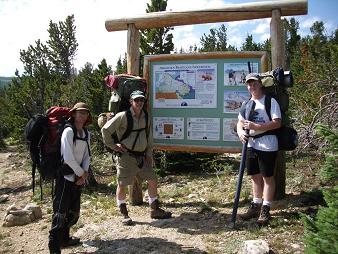
Adam Helman, Ward Thurman, and his son.

|
|
The Mount Wood trailhead. From viewer's left: Adam Helman, Ward Thurman, and his son. |
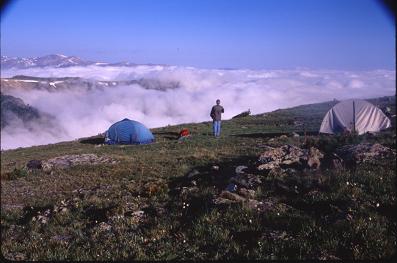
|
|
Our 10,500 foot camp on the Stillwater Plateau. (Ward Thurman photograph) |
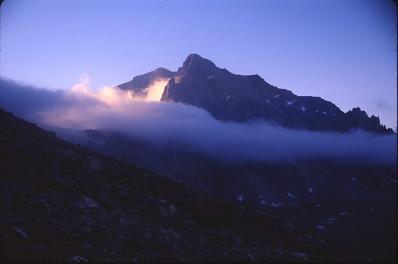
|
|
Mount Wood in early morning light (Ward Thurman photograph) |
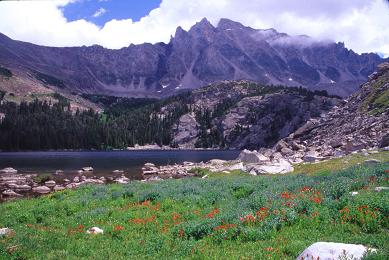
|
|
Mount Wood panorama (Ward Thurman photograph) |
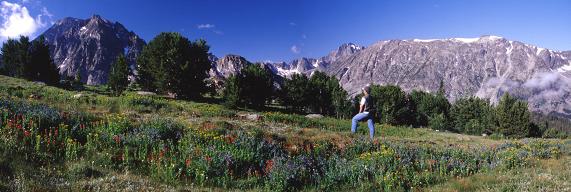
|
|
Mount Wood is at left in this panorama from Wilderness Lake. (Ward Thurman photograph) |
| Description | Latitude, Longitude | Elevation (Feet) |
| car park at "Golf Course" | (45.35605°N, 109.82503°W) | 9,159 |
| trail upper terminus | (45.33635°N, 109.82839°W) | 10,030 |
| 100-150 yards north of camp | (45.29417°N, 109.84908°W) | 10,473 |
| base of gully on west side of Wood | (45.27501°N, 109.82671°W) | 10,248 |
| topping-out on the summit ridge | (45.27386°N, 109.81316°W) | 12,469 |